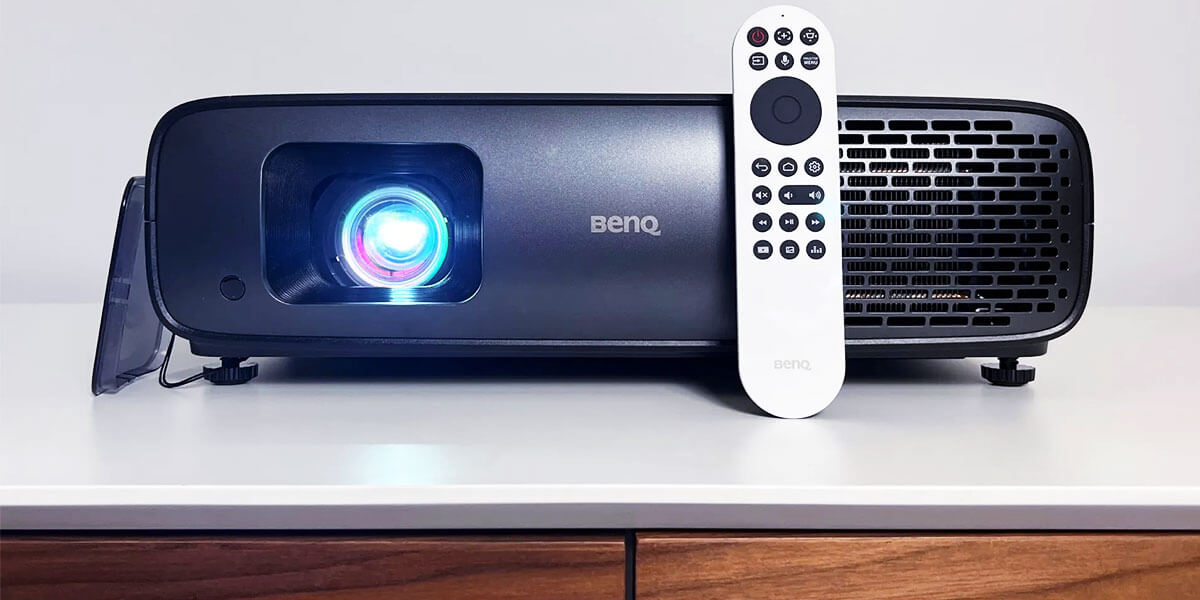The evolution of projector technology began several decades ago and continues to this day. This process is a response to the ever-increasing demand for image quality. Therefore, approaches, technologies, and the types of projectors themselves are changing.
In this exploration, we delve into the various types of projectors, such as CRT, LCD, DLP, LCoS, LED, and Laser, to help you discern which fits your needs impeccably. Whether setting up a home theater or enhancing your presentations, understanding these technologies is key to making an informed choice.
CRT projectors (Cathode Ray Tube)

CRT projectors, which harness the Cathode Ray Tube technology, are the venerable elders of the projector family. Their operation involves shooting electrons through a vacuum onto a phosphorescent screen, merging the three primary color tubes — red, green, and blue — to create the final image. This method results in exceptionally deep blacks and high contrast ratios, significantly impacting image quality with vividness and depth.
However, CRT projectors are bulky and require regular convergence and focus adjustments. They also have a lower light output than their modern counterparts, making them less suitable for well-lit environments. On the upside, they excel in darkened rooms, offering a cinematic experience that is still appreciated by enthusiasts.
The drawbacks include their substantial size, the need for a darker room, and the maintenance involved. Despite these cons, CRT projectors are favored for home theaters by purists who seek an authentic, film-like viewing experience and are not deterred by the hands-on maintenance and setup.
LCD projectors (Liquid Crystal Display)
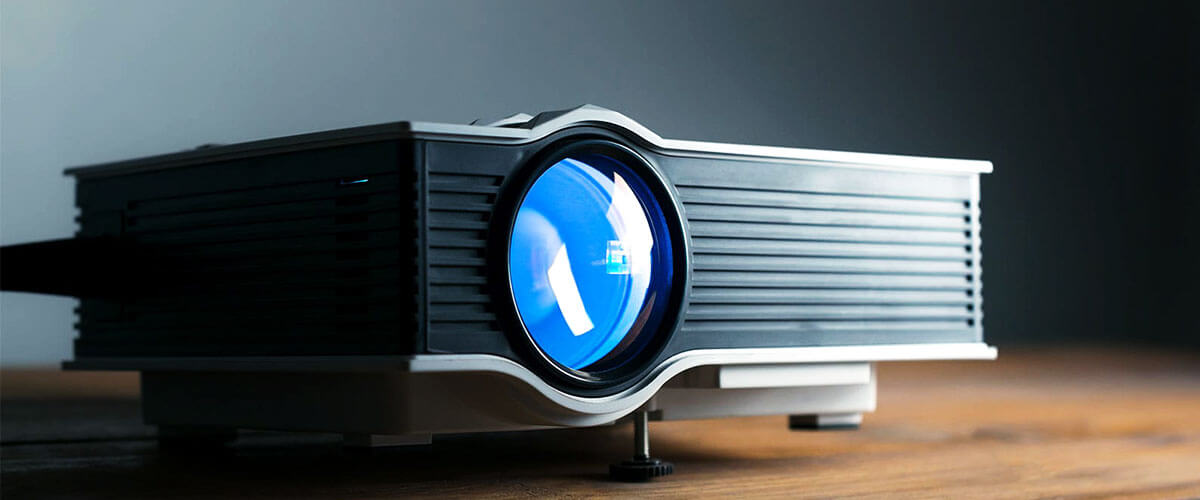
LCD projector types utilize Liquid Crystal Display technology to create images, starkly contrasting the older CRT models. They function by passing a powerful light source through three separate LCD panels, one for each primary color. The light is modulated by the liquid crystals, which either allow light to pass through or block it, thus creating the image that is then projected onto the screen.
One of the hallmark features of LCD projectors is their brightness and sharpness, making them particularly effective in environments with ambient light. They’re known for producing vibrant colors and sharp images, which can be attributed to their high luminosity and excellent color saturation. This makes them ideal for presentations and educational settings where detailed visuals are paramount.
The advantages of LCD projectors include their compact size, energy efficiency, and the crisp image quality they deliver, which is particularly noticeable in static images. However, they can suffer from the ‘screen door effect’, where the grid between pixels becomes visible, and they are not as proficient at displaying deep blacks as DLP projectors.
LCD projectors are versatile and are commonly used in schools, offices, and for home entertainment. They are particularly well-suited for static displays like PowerPoint presentations or for use in spaces where a fair amount of ambient light cannot be controlled. Their easy maintenance and operation make them a favorable choice for users who need reliable performance for frequent and prolonged use.
DLP projectors (Digital Light Processing)
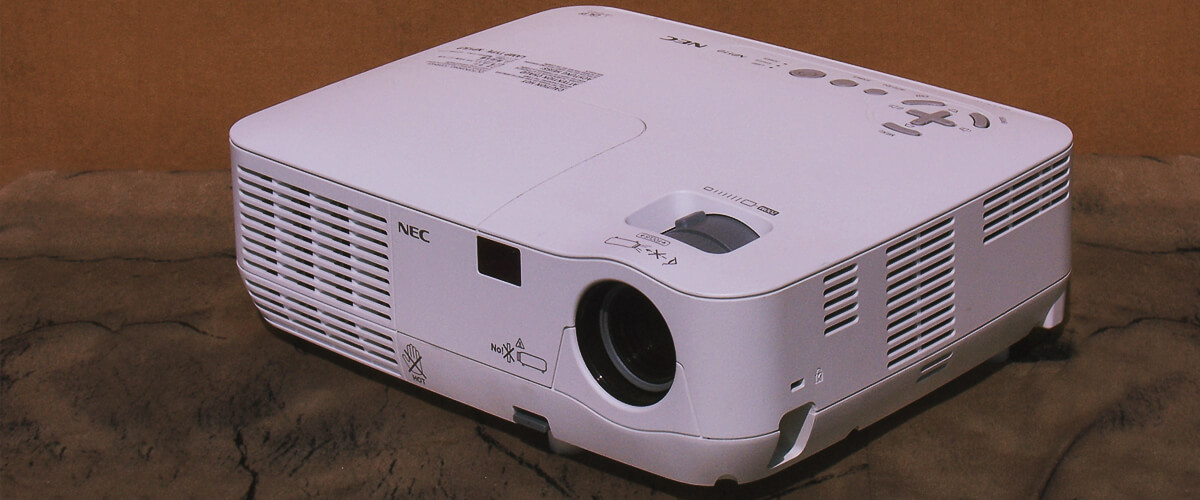
DLP projectors, based on Digital Light Processing technology, work by utilizing a chip made of microscopic mirrors and a spinning color wheel to produce images. Each mirror on the DLP chip represents one pixel and can tilt either towards the light source or away from it, creating a light or dark pixel on the projected image. The rapid spinning of the color wheel as light passes through it blends the basic colors to create the full spectrum on the screen.
The distinct advantage of DLP projectors is their ability to produce smooth, sharp images and videos without the ‘screen door effect’ that can affect LCDs. They are also more compact and less prone to dust particles interfering with the image quality. DLPs are known for their better response time and are less affected by color degradation over time, making them a durable choice.
However, DLP projectors may suffer from the ‘rainbow effect’, where bright objects on a dark background may produce a rainbow trail. Also, their contrast ratios are not as high as some other technologies, which can affect their ability to display deep blacks.
DLP projectors are well-suited for a variety of uses, from home theaters to business and educational settings. Their portability and ease of use make them ideal for presentations on the go, and their high-quality video playback capabilities make them popular for video screenings and home entertainment systems. They strike a balance between performance and practicality, offering a reliable projection solution for a wide range of applications.
LCoS projectors (Liquid Crystal on Silicon)
![]()
LCoS (Liquid Crystal on Silicon) projectors represent a hybrid technology that combines LCD’s detailed imagery and DLP’s reflective technology. These projectors use liquid crystal chips with a reflective backing of silicon, which modulates light through the liquid crystals. Unlike DLP projectors, LCoS devices do not employ a color wheel. Instead, they use three color panels, which results in higher resolution images with no “rainbow effect.”
LCoS projectors excel in delivering rich colors, deep blacks, and exceptional image detail, making them a favorite for environments where superior image quality is paramount. The technology lends itself to producing some of the most detailed and crispest images among projectors, thanks to the higher resolution and smoother video reproduction.
On the downside, LCoS projectors tend to be larger, more expensive, and less bright than DLP and LCD projectors. They also require a darkened environment to prevent washout and ensure the quality of the image is maintained.
These projectors are particularly well-suited for high-end home theaters, professional presentations, and other settings where image quality takes precedence over cost and portability. For users who prioritize top-tier visual performance and can manage the higher cost and size, LCoS projectors are an excellent choice.
LED projectors (Light-Emitting Diode)
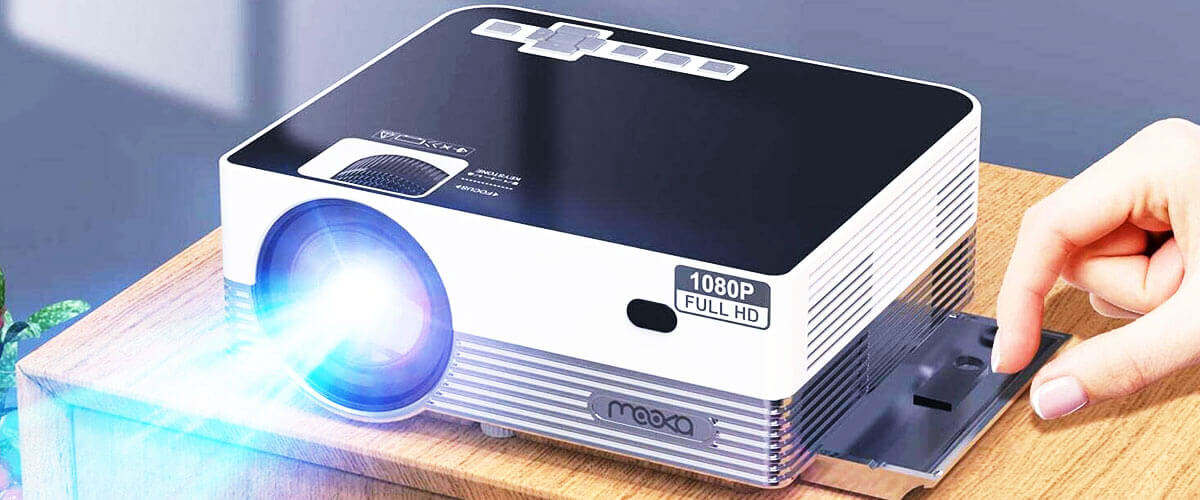
LED projectors utilize Light-Emitting Diodes as a light source, rather than the traditional lamps used in other types of projectors. This technology is celebrated for its low power consumption, long lifespan, and consistent color accuracy over time. LED projectors typically have a very long life, often reaching up to 20,000 to 30,000 hours, significantly outlasting the bulbs of traditional projectors.
In terms of image quality, LED projectors excel in color saturation and provide a wider color gamut, resulting in vibrant and rich images. They also tend to produce less heat and operate more quietly than their lamp-based counterparts, thanks to the more efficient light source.
One of the main advantages of such models is their compact size, which makes them highly portable and convenient for mobile presentations and outdoor cinema setups. They are also more eco-friendly due to the absence of mercury vapor lamps and the lower power consumption.
However, LED projectors often lack the brightness of traditional projectors, which can be a disadvantage in well-lit rooms or for larger projections. This makes them less ideal for large venues but perfectly suited for personal or small group presentations, home theaters, and portable entertainment.
Overall, LED projectors are a solid choice for those looking for a cost-effective, long-lasting projection solution with excellent color reproduction for smaller-scale viewings. They are well-suited for home use, small businesses, and portable applications where the environment can be controlled to accommodate their brightness limitations.
Laser projectors

These devices stand out in the projector landscape for their use of laser light sources, which provide superior brightness and a vast color spectrum, resulting in images of remarkable vibrancy and clarity. They function by modulating laser beams to produce the image directly or by shining them on a DLP, LCD, or LCoS panel. The laser light source has an extensive lifespan, often reaching 20,000 hours or more, substantially reducing maintenance compared to traditional lamp-based projectors.
The advantages of laser projectors are many: they offer instant on-off functionality, eliminate the warm-up and cool-down periods, and maintain consistent color accuracy and brightness over their lifespan. Furthermore, they can produce deep blacks and have a wide color gamut, enhancing overall image quality.
The drawback to laser projectors is primarily the cost, as they tend to be more expensive upfront than other types of overhead projectors. However, this is offset by their longevity and lower maintenance costs.
Laser projectors are particularly well-suited for environments that demand continuous use and for large-scale venues like auditoriums, cinemas, and conference halls. They’re also excellent for outdoor and large venue installations where high brightness is necessary to combat ambient light. Their impressive image quality and operational efficiency make them an increasingly popular choice for professional and educational settings.
Projectors comparison
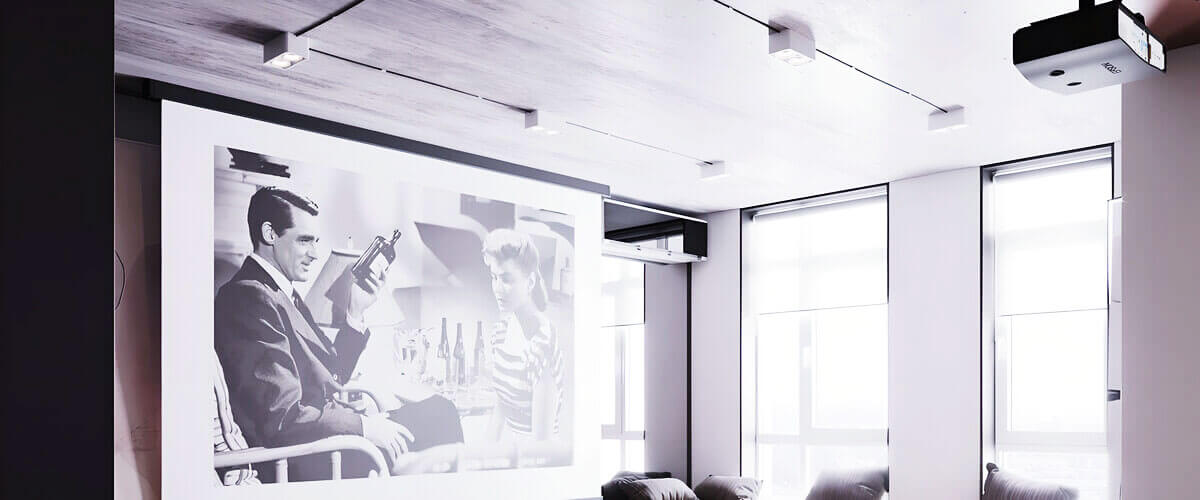
| Characteristic | CRT | LCD | DLP | LCoS | LED | Laser |
|---|---|---|---|---|---|---|
| Brightness | Moderate | High | High | High | Moderate | Very high |
| Contrast ratio | High | Moderate | High | Very high | Moderate | Very high |
| Lifespan | Average | Average | Average | Average | Long | Very long |
| Image quality | High | Moderate | Very high | Very high | Moderate | Very high |
| Maintenance | High | Low | Low | Moderate | Low | Low |
| Use scenarios | Home theater, studio, cinema. | Presentations, education, business | Home theater, education, commercial | Professional, application, home theater | Small venues, exhibitions | Large venues, cinemas, digital signage, home theater |
FAQ
Are there hybrid projectors that combine different technologies?
Yes, there are hybrid projectors that combine different technologies to harness the strengths of multiple approaches. For example, some projectors may use a combination of laser and DLP or LCD technology to achieve high brightness and image quality. These hybrid models are designed to offer a more versatile solution, catering to a wider range of applications. However, they may come at a higher cost compared to single-technology projectors.
Is there a significant difference in image quality between high-end and budget projectors?
Yes, there can be a significant difference in image quality between high-end and budget projectors. High-end projectors often feature advanced optics, superior color accuracy, higher brightness, and better contrast ratios, resulting in sharper and more vibrant images. They may also offer additional features like 4K resolution and advanced image processing. Budget projectors, on the other hand, may have limitations in these aspects, which can affect image quality, especially in challenging lighting conditions. However, for casual use or smaller screens, budget projectors can still provide satisfactory results.
Can modern projectors handle different video inputs like HDMI, USB, or wireless streaming?
Yes, modern projectors are equipped with a variety of input options to accommodate different sources. Most projectors come with HDMI ports, which are widely used for connecting devices like laptops, gaming consoles, and Blu-ray players. Additionally, many projectors include USB ports for playing multimedia content directly from USB drives. Some models also support wireless connectivity, allowing you to stream content from smartphones, tablets, or computers using technologies like Wi-Fi or Bluetooth.
How important is projector brightness, and how does it vary between technologies?
Projector brightness is an important factor that determines how well the projected image is visible, particularly in environments with ambient light. The importance of brightness varies depending on the intended use. For home theaters and darkened rooms, lower brightness may suffice, while commercial and educational settings often require higher brightness for visibility.

